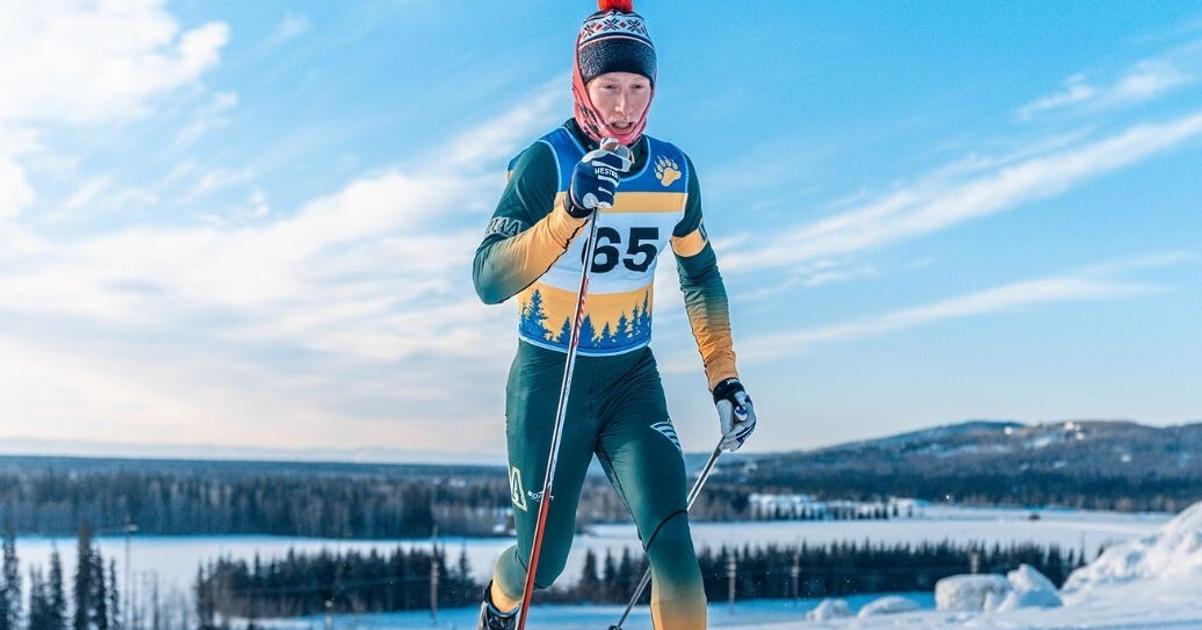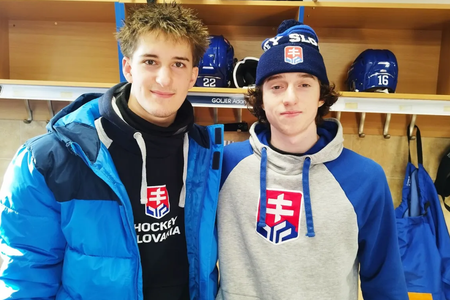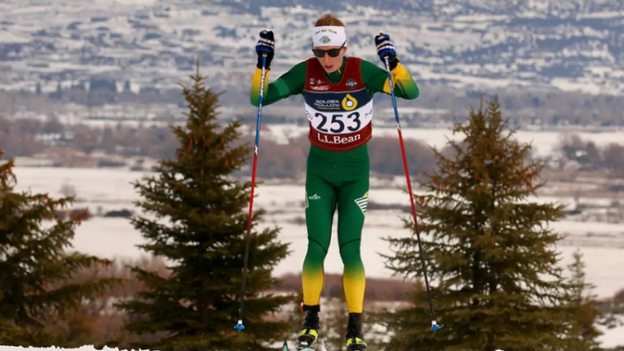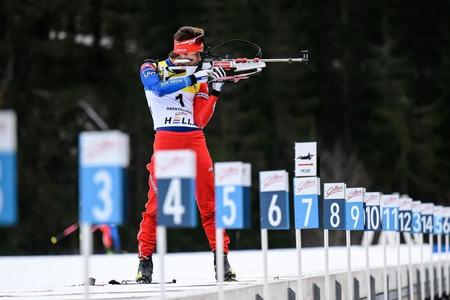“We don’t have that in America,” said Slovak-American cross-country skier Peter Hinds, 23, after training in a snow tunnel for the first time in his life.
He is beginning to grasp what training in Europe truly means—camps at high altitude, regular training camps, and even skiing in tunnels that simulate winter in the middle of autumn.
Just a few months ago, Hinds was training in Alaska while studying at university. The idea of joining the Slovak national team felt distant. Now, he proudly wears Slovakia’s coat of arms on his chest, chasing his Olympic dream.
A new overseas addition to the Slovak national team, he is ready to test himself against the world’s best.
Slovak roots from Alaska
“I’m Peter, I was born in Alaska,” he said with a smile, as if it were the most natural thing in the world.
His father is American, his mother Slovak—a mix of two worlds that eventually intertwined. “When I was young, we went to Slovakia almost every year, sometimes even for Christmas,” he recalled.
He attended the first grade of primary school in Bratislava. “I learned Slovak quite well. When you’re a kid, it comes naturally.” Later, the family moved back to Alaska, and he continued speaking Slovak with his mother.
“I did downhill skiing when I was very young. When I was about 12, I switched to cross-country skiing,” he said. Later, a year-long exchange in Germany exposed him to international training methods.
After returning, he finished high school in Alaska and spent a year in Montana, living in a small mountain town—perfect terrain for a cross-country skier.
“It was ideal for training. Lots of hills, snow, and opportunities to be outside,” he said.
In the U.S., college sports play a huge role, with universities offering scholarships to talented athletes. “If you’re good, you get noticed,” he said. That’s how a coach offered him a place on the Alaskan team.
Related article
We are immigrants, they say laughingly. Canadian and American play for Slovakia
Read more
Training among American aces
While studying, his life revolved around training and snow—especially in a city where winter lasts eight months. Over time, he became one of the best university skiers in the country, training alongside top American athletes.
“Rosie Brennan was there the whole time I was on the team. Gus Schumacher joined two or three years ago. They were my role models,” he said. “We had really tough training every summer. I made the team when I was 14.”
These sessions taught him what professionalism means. “The best training is having someone faster and stronger than you. It pushes you to improve. Every day I had someone to chase. That’s the biggest motivation.”
After finishing school, Hinds found himself caught between two worlds. “I felt I had potential, but I didn’t have support from the American team,” he said. Competition in the U.S. is fierce—only the top ten receive backing. So, he looked to his roots.
“I started checking whether I could ski for Slovakia.” The change in affiliation was surprisingly quick. “The Slovak Ski Association was amazing—they arranged everything really well and fast.”
He arrived in Slovakia this September and immediately joined a training camp. “It works like this: we have a two-week camp every month, and the rest of the time we train individually, with races in between.”
Peter Hinds (source: Zväz Slovenského Lyžovania)
Language barriers in the team
In June, the Slovak national team brought in renowned Czech coach Jan Franc—a major boost for cross-country skiing.
“Jan Franc is a great coach. He knows what matters and what to focus on,” said Hinds.
The team speaks a mix of Slovak, Czech, and English. “The first week, I didn’t understand much,” he admitted. “The team speaks a lot of Czech, but it got better every day.”
Now, he understands almost everything in Czech and responds in Slovak. “It’s much better than a month ago,” he said, adding that everyone speaks enough English to help each other out.
After years of training across the ocean, Hinds finally feels he’s where he belongs. “Now I have support I never had before. I have the energy and determination to keep going.”
Related article
A fresh start in Slovakia: The rising star of Slovak biathlon
Read more
Europe, respect and competition
Moving from America to Europe has opened his eyes to a new world—different pace, tougher courses, and higher competition. “The best skiers in the world are in Europe,” he said without hesitation.
The Cross-Country World Cup is a steep learning curve. Every detail matters—snow conditions, rhythm, technique, and mental strength.
“If I’m not last, that’s a success for me,” he admitted. “Every result is a signal—a way to see where I need to improve and how to move forward.”
He knows he’ll be racing against the names he’s admired since childhood. “Some are so fast it’s almost impossible to catch them,” he said.
European races are demanding—varied conditions, higher pressure—but that’s what drives him. “It’s good for your mindset. Seeing where I stand in the world pushes me further,” he said.
“I have respect. But being a little afraid means you care.”
Slovak passport, Olympic dream
He has had his Slovak passport for only a few months, yet he’s already competing in the national jersey. After years in the U.S., he has officially joined the country of his mother’s roots.
One goal stands above all—the Winter Olympics in Milan and Cortina.
“The Olympics are the ultimate dream. I want to try,” he said. He knows the path won’t be easy.
“Every race counts for qualification. I just have to keep performing well and improving,” he said.
Slovakia currently has three Olympic spots—two for men and one for women—though that number may still change. The qualification deadline is in January, but the first real test comes in December.
He knows the road to the Olympics will be decided by details. “I have to stay healthy and fast. I hope I can do it.”
Hinds already has a clear plan. “I want to finish in the top 30 in a World Cup sprint to advance from the first round. To improve every year—and maybe make the podium one day.”
“I want to race against the heroes I’ve followed my whole life—against Pellegrino, against Johannes Klæbo,” he concluded.
©Sportnet



